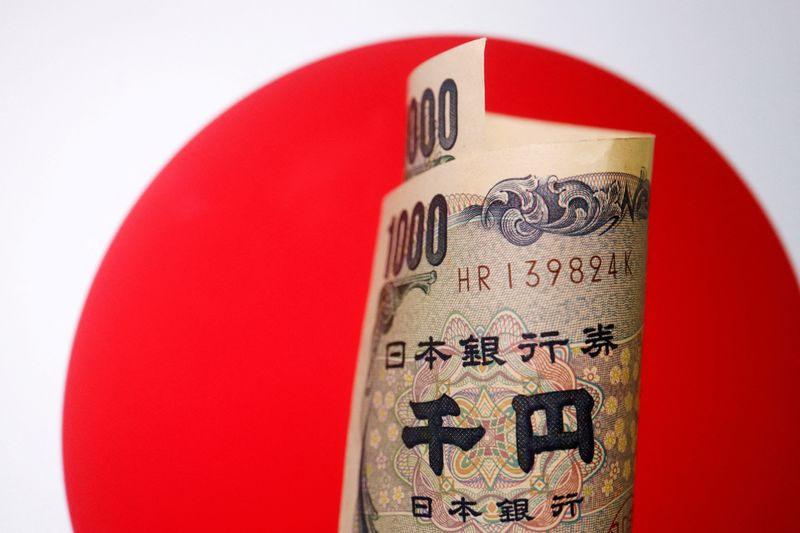By Tetsushi Kajimoto
TOKYO (Reuters) -Japan's government on Tuesday left its own projections unchanged for achieving a primary budget surplus in the fiscal year ending in March 2027 - lagging by a year from its ambitious target, according to projections by the Cabinet Office.
Under an optimistic scenario of nominal 3% and real 2% growth, the government's projections showed the primary budget at a deficit of 1.3 trillion yen ($9.19 billion) in fiscal 2025.
It marked a slight improvement by 0.2 trillion yen compared to the previous estimate in January, due to higher-than-expected tax revenue despite slowing growth.
It is seen returning to a surplus of 2.3 trillion yen in fiscal 2026, according to the projections which were presented to a top economic advisory panel to Prime Minister Fumio Kishida.
Kishida's government pledges to bring a primary budget surplus, excluding new bond sales and debt servicing costs, by the fiscal year ending in March 2026, and to lower the debt-to-GDP ratio.
Kishida must strike a delicate balance to meet conflicting demands to revive flagging growth and curb the industrial world's heaviest debt burden, which is more than twice the size of Japan's economy.
While the government steered clear of setting a rigid ceiling on spending for each ministry in the next fiscal year's draft budget plan, structural wage hikes and investment expansion are among the focuses of the fiscal 2024 outlay.
"To achieve private demand-led growth, we must focus on supply capacity, structural wage hikes and steps to mitigate price hikes, while ready to guide flexible policy reflecting prices and economy," Kishida's advisory panel said in a separate document on the budget draft.
"We will accelerate a shift in policy away from supporting the economy during the COVID era and towards strengthening supply side as we revert fiscal spending structure to peace time."
A primary budget surplus could still be in sight in fiscal 2025 if the government continues efforts to streamline spending.
Still, uncertainty clouds the outlook over big spending plans on the military and childcare, while a global slowdown, rises in interest rates and more fiscal stimulus are seen as risks.
Japan's government first set a primary budget balance goal in the early 2000s, but the target remains elusive, forcing the government to push it back several times.

Under a modest projection of 0.5% growth, budget-balancing won't be met through the forecast period to fiscal 2032.
($1 = 141.5200 yen)